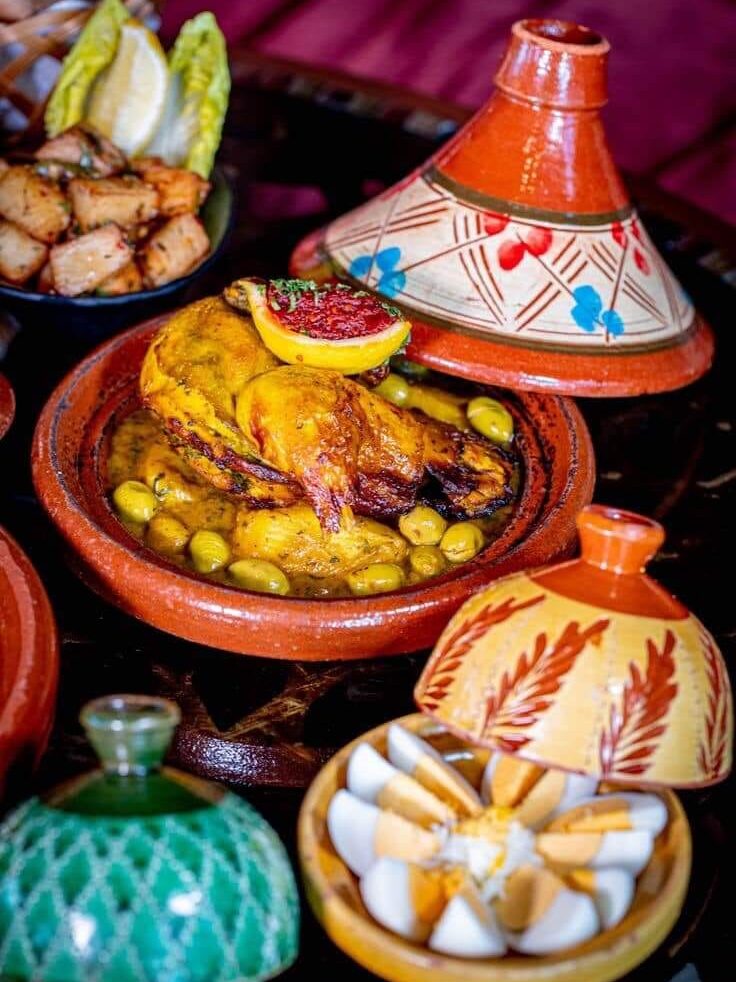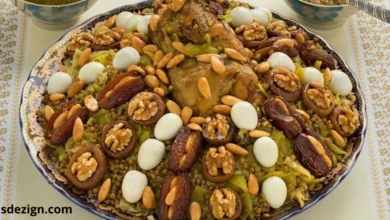The Magic of Moroccan Cuisine: A Blend of Traditions and Unique Flavors.4
The Magic of Moroccan Cuisine: A Blend of Traditions and Unique Flavors.4
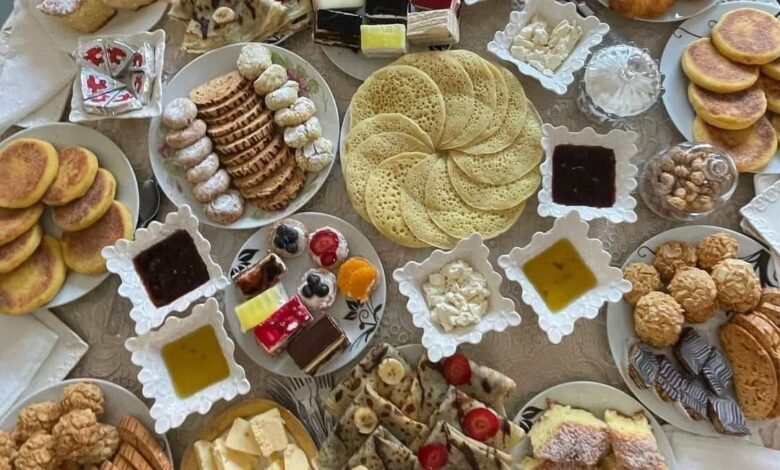
Have you ever tasted Moroccan cuisine in a single bite?
Moroccan cuisine is not just dishes served on a table; it is a magical journey that takes you through centuries of history and traditions. Thanks to a unique blend of Arab, Berber, Andalusian, and African influences, Moroccan cuisine has become one of the world’s richest and most famous. Moroccan food reflects a rich heritage and an innovative spirit from the slow-cooked tagine to the aromatic flavors that fill the air in local markets. Join us as we uncover the secrets of this cuisine full of flavors and traditions that reflect the essence of Moroccan culture while highlighting how these dishes are prepared and what sets them apart from others.
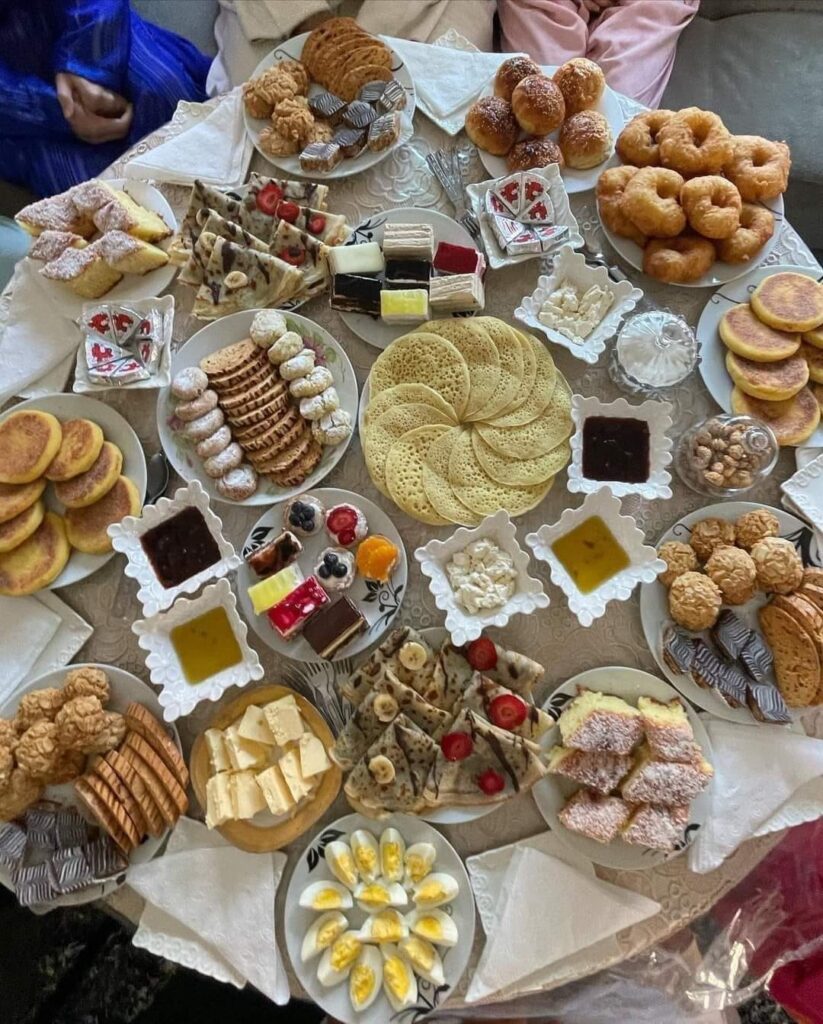
Table of Contents
What you’ll find in this article:
- The roots of Moroccan cuisine and its cultural influences: How it evolved through Berber, Arab, Andalusian, and African influences.
- Famous traditional Moroccan dishes: Such as tagine, couscous, and pastilla, with a glimpse into their unique ingredients and flavors.
- Spices and essential ingredients: The secrets of Moroccan flavor and the importance of spices like saffron, cinnamon, and cumin.
- The customs and traditions associated with Moroccan food: The dining experience as part of Moroccan culture and social traditions.
- How to begin your journey into Moroccan cooking: Simple recipes for beginners.
- Moroccan cuisine around the world: Its fame and spread in international restaurants.
The Magic of Moroccan Cuisine: A Blend of Traditions and Unique Flavors
Moroccan cuisine is considered one of the most diverse and richest in the world, blending ancient traditions with various cultural influences that reflect Morocco’s rich history. It is a unique mix of spices, herbs, and fresh ingredients that harmonize to create distinctive flavors that are hard to find anywhere else. Moroccan food is famous for its traditional dishes such as tagine, couscous, pastilla, and harira, which are prepared using a wide range of spices like saffron, cumin, and cinnamon, adding a rich and complex character to the food.
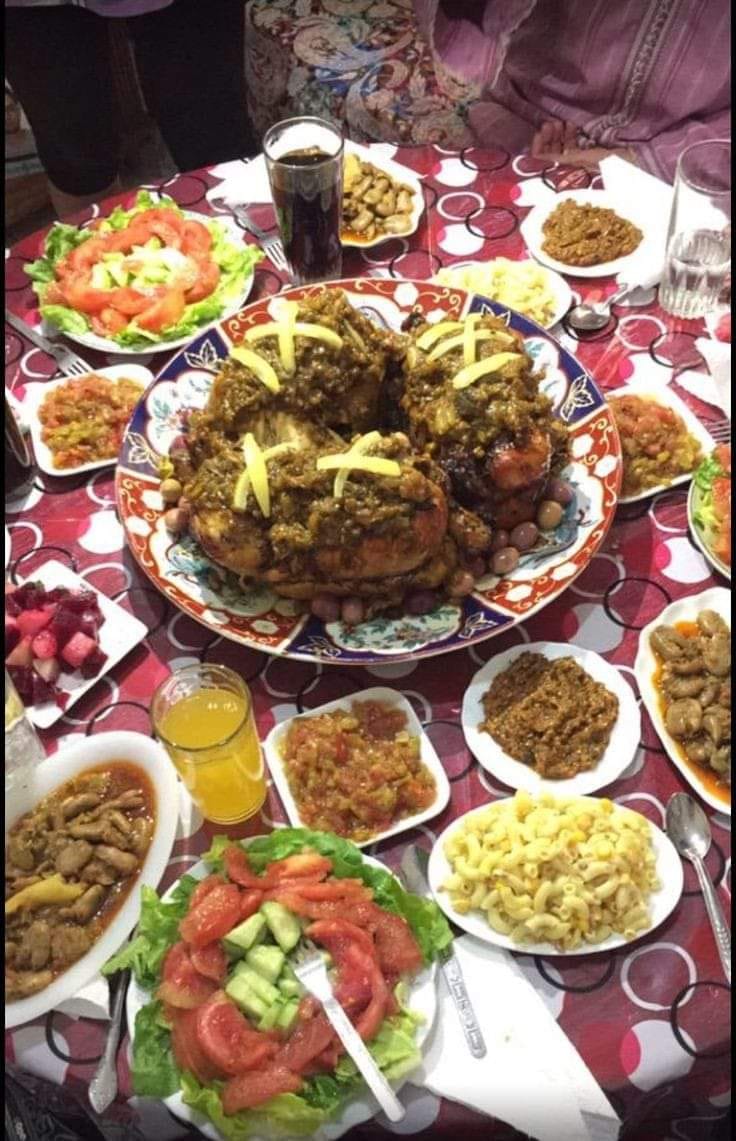
But the magic of cuisine is not only in the flavors but also in its preparation. The rituals associated with cooking and serving food are an integral part of the experience. Tagine, for instance, is slowly cooked in a special clay pot, allowing the ingredients to interact and highlight the depth of flavors. Serving food on large communal trays encourages sharing and social bonding, which is part of the culture of hospitality that defines Moroccan society.
In addition, Moroccan mint tea is one of the most prominent symbols of Moroccan hospitality. It is prepared and served in a special way that reflects respect for guests. Thanks to these traditions, Moroccan cuisine has become not only one of the most famous in the world but also one of the most exciting cultural experiences that combine unique tastes with ancient customs that are key to understanding Moroccan identity.
Beyond traditional ingredients, Moroccan dishes inspire chefs worldwide, who find in the mix of Moroccan spices and herbs a way to express their creativity. Thanks to this blend of ancient traditions and unique flavors, Moroccan food is a true magic that opens the door to new worlds of taste and experience.
Historical Roots and Cultural Influences
culinary traditions of Morocco are one of the oldest and richest in the world, marked by great diversity that reflects Morocco’s deep history and the fusion of various cultures over time. Since ancient times, Moroccan cuisine has been influenced by numerous cultures that passed through Morocco, making it a unique blend of ingredients and flavors.
The Berber Influence:
The Berbers, the indigenous people of Morocco, form the foundation of traditional Moroccan food. The Berbers used grains like barley and wheat, as well as root vegetables such as potatoes and carrots, which remain essential ingredients in Moroccan food today. They also cooked food using the tagine, a special clay pot considered one of the oldest cooking tools in Morocco.
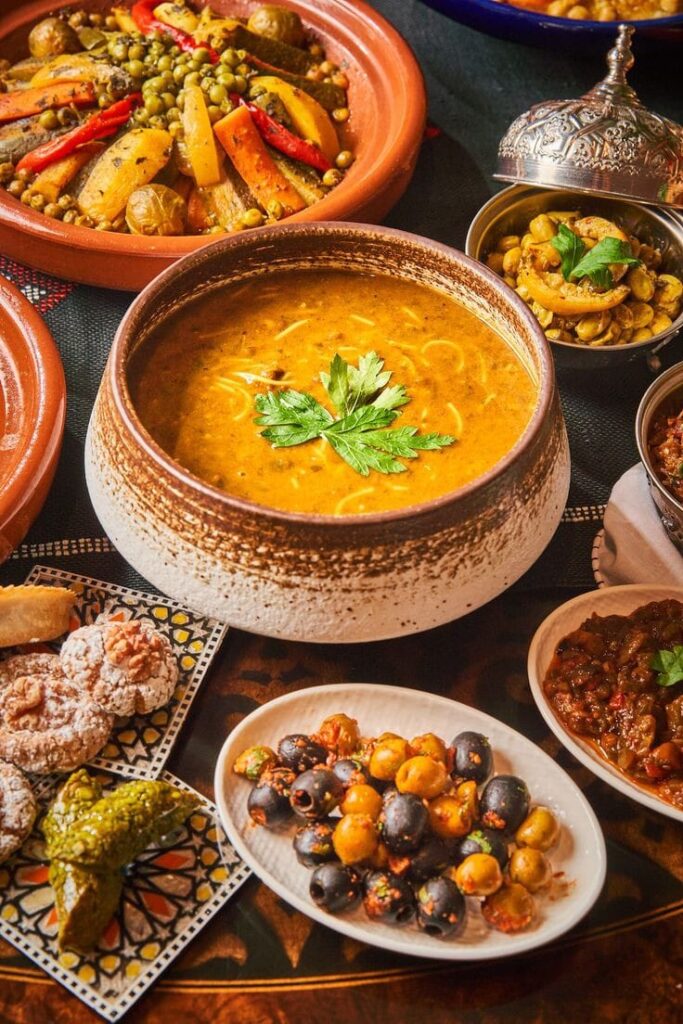
The Arab Influence:
When the Arabs entered Morocco in the 7th century, they brought with them Arab cooking culture, which was influenced by Persian and Indian cuisine. The Arabs introduced spices such as cumin, saffron, and cinnamon, which became essential to Moroccan dishes. Grilling and preparing spicy dishes became part of the traditional Moroccan culinary practices because of this influence.
The Andalusian Influence:
After the fall of Andalusia in the 15th century, many Andalusians migrated to Morocco, significantly impacting Moroccan dishes. The Andalusians brought cooking traditions featuring dried fruits and nuts such as almonds and raisins in savory dishes. They also introduced ingredients like honey, mastic, and rosewater, which added a sweet and refined touch to Moroccan food.
The Turkish Influence:
During the Ottoman rule in North Africa, Turkish influences on Moroccan cuisine became evident. The use of meats, especially lamb and chicken, as well as soups and pastries, became part of Moroccan dishes.
The French and Spanish Influence:
During the French and Spanish colonial periods in Morocco in the 19th and 20th centuries, some European habits and ingredients became intertwined with this cuisine. For example, pastries like pâté and croissants became part of Moroccan food, and the French introduced the concept of “fast food” and fresh juices.
The Mediterranean and African Influence:
As part of the Mediterranean, Moroccan dishes have been influenced by seafood and olives, which are integral to Mediterranean food culture. Additionally, African cooking techniques influenced some Moroccan dishes, such as hearty stews and grilled foods.
Thanks to these multiple influences, Moroccan cuisine has become a unique fusion reflecting Morocco’s cultural diversity over the ages. “traditional Moroccan food” is a true embodiment of the country’s historical roots, representing an amazing union of ancient traditions and modern innovations that have made it one of the richest cuisines in the world.
Famous Traditional Moroccan Dishes:
Tagine:
Tagine is not just a dish; it is a distinctive cooking method using clay pots that give food a unique flavor. It is prepared with various ingredients such as meat, vegetables, and olives, and cooked slowly over low heat for hours, resulting in tender food rich in flavor.
Example: Prune tagine, which combines sweet and savory flavors with the addition of caramelized prunes to cinnamon-seasoned meat.
Couscous:
Couscous is Morocco’s national dish, usually prepared during family gatherings. It is served with seasoned vegetables in a special broth, often topped with meat or chicken.
Couscous Pastilla
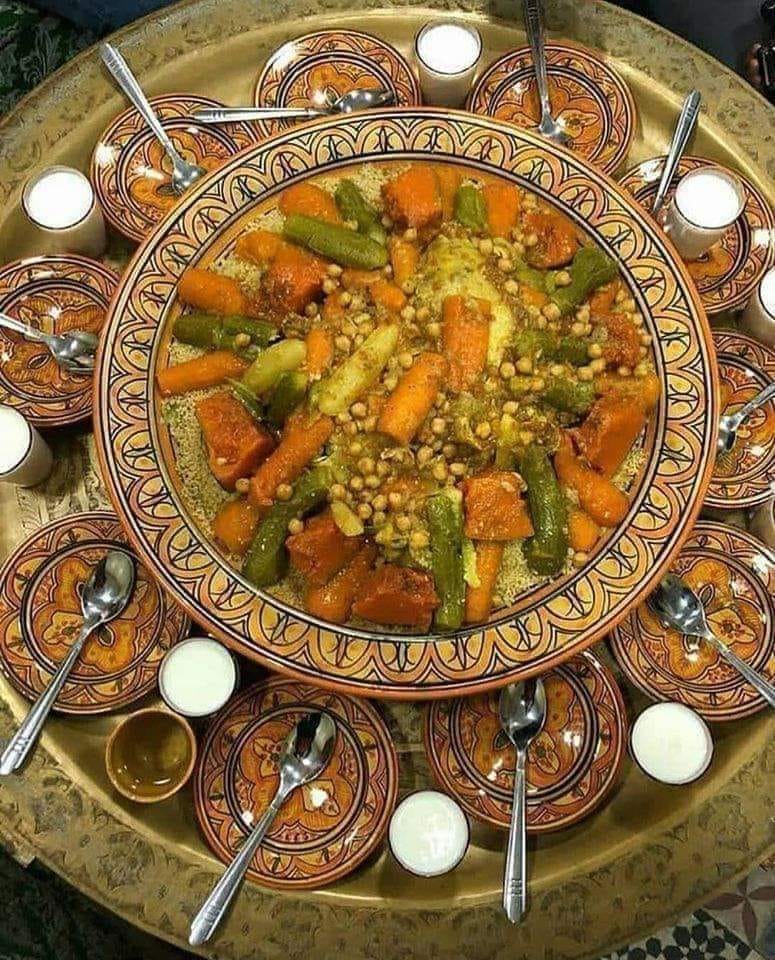
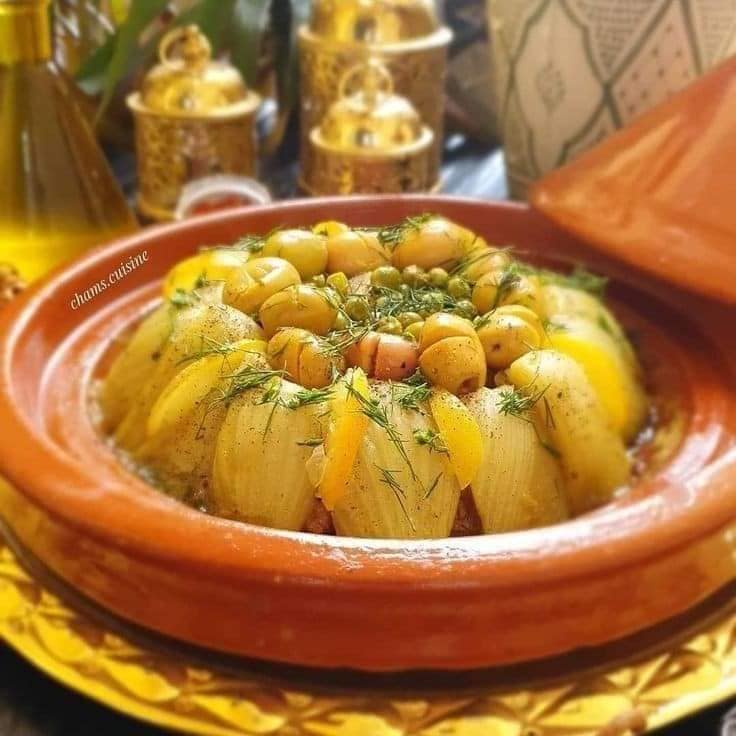
Pastilla :
This dish combines sweet and savory flavors, where thin pastry sheets are filled with almonds, chicken, and cinnamon, and served as a main course during special occasions.
The Secrets of Moroccan Flavor: Spices and Essential Ingredients
No discussion of Moroccan cuisine is complete without mentioning spices, which are the soul of Moroccan dishes. A special blend known as “Ras el Hanout” is used, consisting of 20 to 40 different spices, depending on the region and recipe.
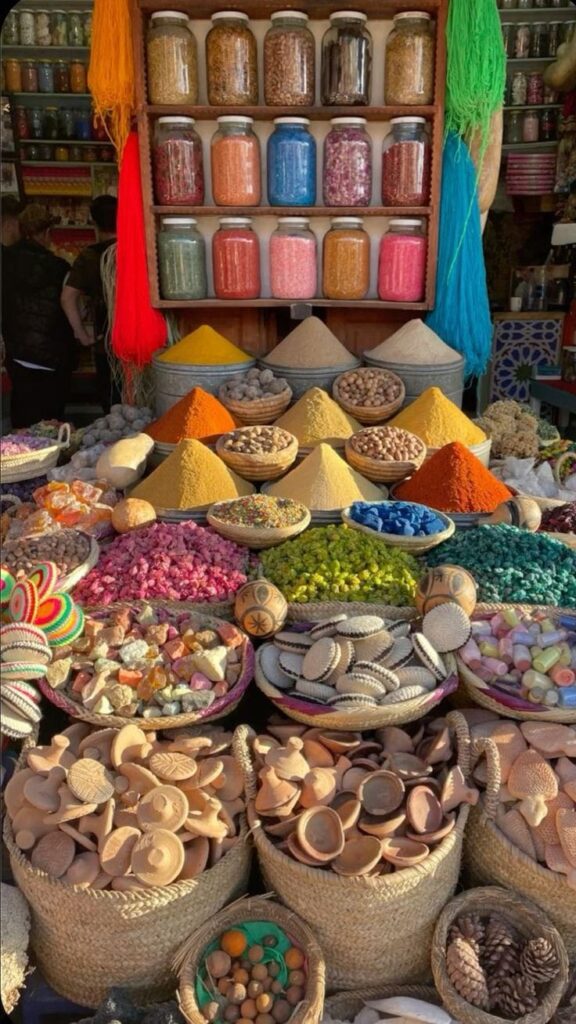
Notable spices include:
- Saffron: Used to impart a unique flavor and color, especially in tagines.
- Cinnamon: Added to both sweet and savory dishes, such as prune tagine.
- Cumin and Turmeric: Used for seasoning meats and adding a warm taste.
Quote: Renowned Moroccan chef Abdel Rahim El-Hlimi says, “Spices are not only for flavor but also a key element that tells the story of Moroccan dishes.”
Customs and Traditions Associated with Moroccan Food
In Morocco, food is more than just a means of satisfying hunger; it reflects the spirit of Moroccan culture and traditions. The act of dining embodies social values such as generosity, bonding, and celebrating life, making the Moroccan dining experience filled with unique customs and ancient rituals.
- Sharing Food as a Symbol of Social Unity:
Moroccan traditions make food a way of communicating and strengthening relationships. Food is served on large communal trays in the center of the table, where everyone eats using bread, highlighting the concept of unity and harmony. During special occasions like weddings or holidays, people gather around special dishes like tagine and couscous, which enhances the sense of sharing and collective joy. - Moroccan Tea: A Symbol of Hospitality:
No Moroccan gathering is complete without a cup of mint tea, which is considered a symbol of welcoming guests. Tea is served in a special way using a silver teapot, pouring it from a height to add a touch of beauty and show hospitality. The Moroccan saying, “The guest is the king of the house,” reflects the importance placed on guests. - Special Occasion Customs:
- Holidays and occasions in Morocco are associated with unique food customs, such as:
- Ramadan: Harira soup is served as the main meal to break the fast, accompanied by dates and sweets like “Chebakia.”
- Religious Holidays: During Eid al-Adha, special dishes like grilled meat and “Mellouh” are prepared.
- Weddings: Luxury dishes such as pastilla are served as a symbol of grand celebration.
The Aesthetics of Food Presentation:
Moroccan traditions place great importance on the decoration of dishes, using nuts, dried fruits, and herbs to create an artistic touch. Dishes are served in clay or decorative copper trays, reflecting the depth of Moroccan culture.
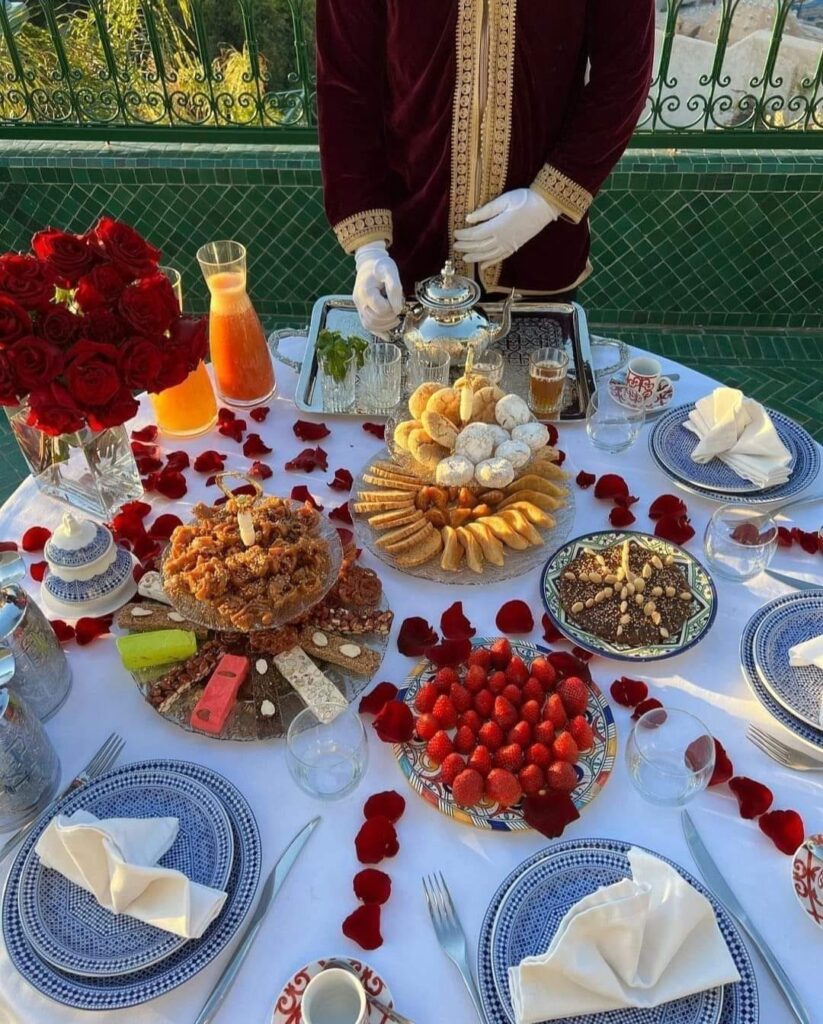
Respecting Rituals During Meals:
Moroccans observe traditional dining etiquette, such as starting the meal with “Bismillah” (In the name of God), eating from the part of the dish closest to them in respect for others, and ending the meal with gratitude and prayers for the host.
Moroccan food is not just about dishes served on a table; it is a unique cultural experience that embodies generosity and the celebration of life. Whether in a Moroccan home or a restaurant, you will have a special experience that reflects the identity of this country, rich in customs and traditions.
How to Begin Your Moroccan Cooking Journey?
If you are eager to explore Moroccan dishes from home, start with simple recipes such as making Moroccan Mint Tea, Couscous, or a Simple Tagine. These dishes require few ingredients but pack in loads of flavor and history. There are plenty of resources online, including blogs, cooking videos, and cookbooks that offer tips and tricks for cooking these amazing dishes at home.
Once you get familiar with the basics, try experimenting with different spices and flavor profiles to create your Moroccan-inspired dishes.
Moroccan Cuisine on the Global Stage
Moroccan dishes is considered one of the most diverse and renowned cuisines globally, combining influences from Amazigh, Arab, Andalusian, and Mediterranean cultures. These different cultural elements give Moroccan cuisine a unique character, making it one of the most admired cuisines in the world. In recent years, Moroccan dishes has gained widespread recognition, thanks to its iconic dishes such as tagine and couscous, which have become staple items on menus in top international restaurants, often presented in innovative ways that appeal to global tastes.
Several factors have contributed to spreading this cultural heritage worldwide, including Moroccan tourism and immigration. Moroccan family-owned restaurants and cultural festivals have played an important role in introducing Moroccan flavors. Additionally, modern media has played a significant role in highlighting Moroccan dishes, with cooking shows and cookbooks drawing attention to its traditions and unique preparation methods. These media outlets have helped raise awareness of Moroccan dishes, making them a popular choice in many countries.
Furthermore, Moroccan chefs and international cooks have creatively blended Moroccan spices with modern culinary techniques to reinvent traditional dishes. They have been successful in balancing authenticity and innovation, preserving the traditional Moroccan flavors that have defined the cuisine for centuries.
In addition, Moroccan food rituals stand out as an essential part of the culture of hospitality, focusing on sharing and celebrating the guest. These rituals have inspired many other cultures. These traditions are not limited to food alone but also include the way dishes are served and shared, symbolizing the Moroccan spirit of generosity across the globe.
As a result, Moroccan cuisine continues to strengthen its place as part of global cultural heritage, influencing tastes worldwide with its distinctive flavors and techniques that reflect the richness of this ancient culinary tradition.
Moroccan cuisine is not just food; it is a reflection of a culture rich in history and tradition. With its unique blend of flavors and techniques, it has enchanted the hearts of millions around the world. Whether you are seeking a new culinary experience or wish to explore a different culture, discovering Moroccan cuisine will be an unforgettable journey.


